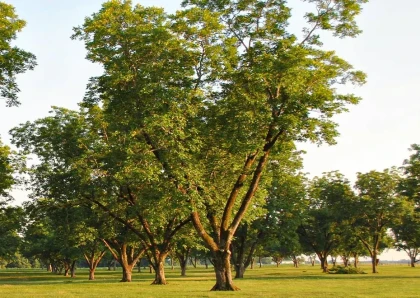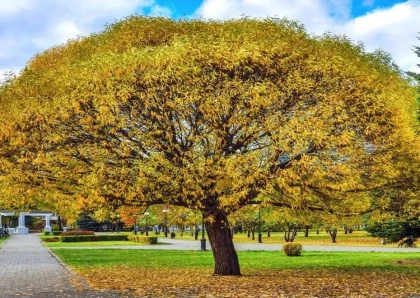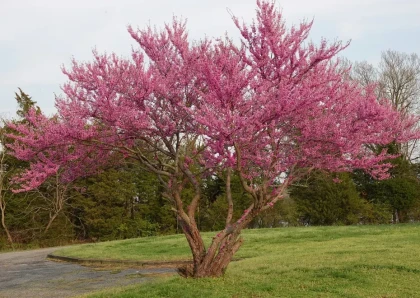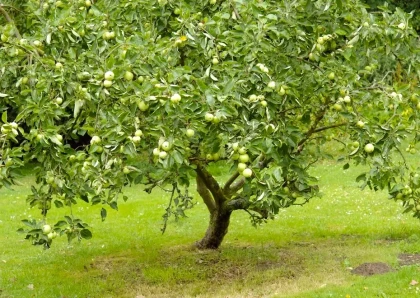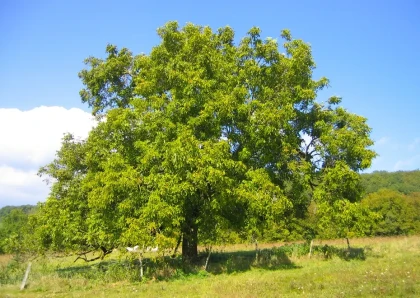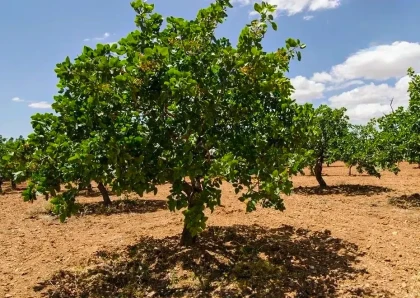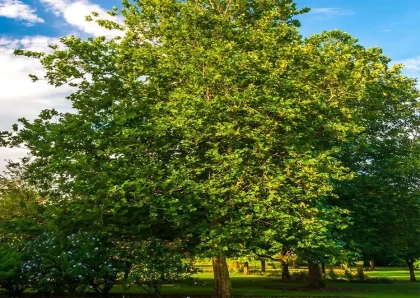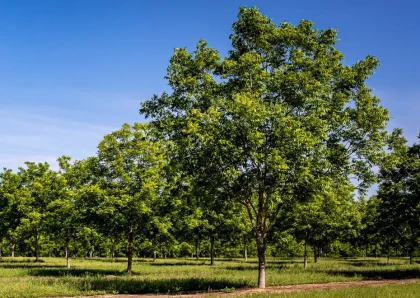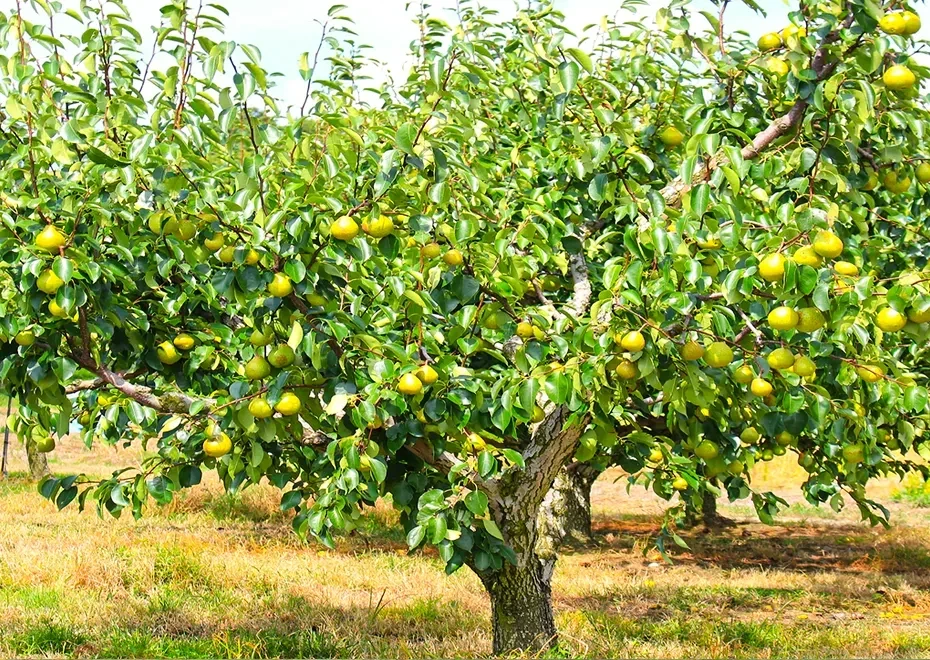
Bartlett Pear Tree
Overview
History of the Tree
The Bartlett Pear Tree, also known as Williams' Bon Chrétien, has a rich history that dates back to the 18th century. It originated in England and was later introduced to the United States by a Massachusetts farmer named Enoch Bartlett. Since then, it has become one of the most popular pear varieties worldwide.
Detailed Description of the Tree
The Bartlett Pear Tree is a medium-sized deciduous tree with an upright and spreading growth habit. It can reach a height of 15 to 20 feet (4.6 to 6.1 meters) with a similar spread. The tree features glossy, dark green leaves that turn vibrant shades of yellow and red in the fall, adding ornamental value to landscapes.
During spring, the Bartlett Pear Tree produces clusters of small white flowers that are both fragrant and attractive to bees for pollination. These blossoms give way to small, green fruit that gradually matures into the well-known yellow-green Bartlett pears. As the pears ripen, they develop a smooth and juicy texture with a sweet and aromatic flavor.
Types of This Tree
The Bartlett Pear Tree is available in various cultivars, including:
- Bartlett Red: A variation of the Bartlett pear with a red blush that develops on the skin as it ripens, adding visual appeal.
- Bartlett Fireblight Resistant: This cultivar is bred to exhibit resistance to fire blight, a common bacterial disease affecting pear trees.
Importance of This Tree
The Bartlett Pear Tree holds several important qualities:
- Exceptional Flavor: Bartlett pears are renowned for their exceptional flavor, offering a perfect balance of sweetness and acidity. They are delicious when eaten fresh and versatile for culinary applications.
- Long Harvest Season: One of the significant advantages of the Bartlett Pear Tree is its extended harvest season. The pears ripen in late summer, allowing for a prolonged period of fruit availability and enjoyment.
- Excellent for Canning and Preserving: Bartlett pears are highly suitable for canning and preserving due to their tender flesh and rich flavor. They maintain their texture and taste when cooked, making them a favorite for jams, jellies, and canned pears.
How to Care for This Tree
Proper care is essential to ensure the health and productivity of the Bartlett Pear Tree:
- Plant the tree in a location that receives full sunlight and has well-drained soil. Good air circulation is also important to minimize disease risks.
- Water the tree regularly, providing deep irrigation to promote healthy root development. Keep the soil evenly moist, especially during dry periods.
- Apply a layer of organic mulch around the base of the tree, extending to the drip line. Mulch helps conserve moisture, suppress weeds, and regulate soil temperature.
- Prune the tree during the dormant season to remove dead or damaged branches, improve airflow, and maintain a desired shape. Pruning also stimulates new growth and enhances fruit production.
- Monitor for common pests and diseases, such as pear psylla, codling moth, and fire blight. Take appropriate measures, such as applying organic insecticides or implementing cultural practices, to manage and prevent infestations.
- Fertilize the tree annually with a balanced fruit tree fertilizer in early spring. Follow the manufacturer's instructions regarding application rates and timing.
Benefits of the Tree
The Bartlett Pear Tree offers several benefits:
- Delicious Pears: Bartlett pears are beloved for their juicy and sweet flavor. They are excellent for fresh eating, canning, baking, and incorporating into various recipes.
- Abundant Harvest: The Bartlett Pear Tree is known for its generous fruit production, often yielding large quantities of pears each season.
- Long Storage Life: Once harvested, Bartlett pears can be stored for an extended period. They have the ability to ripen off the tree while maintaining their quality and flavor.
- Attractive Appearance: The yellow-green skin of Bartlett pears is visually appealing, and their symmetrical shape makes them aesthetically pleasing in fruit displays and desserts.
How to Plant This Tree
Follow these steps to successfully plant a Bartlett Pear Tree:
- Select a planting location that receives full sunlight and has well-drained soil. Avoid areas prone to frost pockets or excessive moisture.
- Dig a hole that is wider and slightly deeper than the root ball of the tree.
- Place the tree in the hole, ensuring that the graft union is above the soil line.
- Backfill the hole with soil, gently firming it around the roots to eliminate air pockets.
- Water the tree thoroughly after planting and provide regular watering as needed to keep the soil moist.
Different Types of Wood Products That Can Be Made From
Bartlett pear wood is not commonly used for woodworking due to its relatively small size and the preference for more specialized hardwoods. However, small-scale projects such as carving, turnings, and decorative crafts can make use of the fine-grained and light-colored pear wood for its aesthetic appeal.
Cons
While the Bartlett Pear Tree has numerous advantages, there are a few considerations to keep in mind:
- Pollination Requirement: Bartlett pears require cross-pollination from another compatible pear variety to set fruit. Planting a different pear tree nearby or choosing a self-fertile cultivar will ensure adequate pollination and fruit production.
- Disease Susceptibility: Bartlett pear trees are susceptible to various diseases, including fire blight, pear scab, and powdery mildew. Regular monitoring, proper sanitation, and timely application of appropriate treatments are necessary to prevent and manage these issues.
- Space Requirements: Bartlett pear trees can reach a substantial size when fully mature. Ensure you have enough space to accommodate their growth and consider pruning to maintain a manageable size.
FAQs
Q: How long does it take for a Bartlett Pear Tree to bear fruit?
A: Bartlett pear trees typically start producing fruit within 3 to 5 years after planting, although the exact timing can vary depending on growing conditions and tree health.
Q: Can Bartlett pears be eaten when still green?
A: Bartlett pears are typically harvested when they are mature but still firm and green. They will continue to ripen off the tree and turn yellow as they become sweeter and juicier.
No listings available
Related Products
Questions & Answers
What do you want to know about this product?
Reviews (5)
PearWhisperer_83
A Bountiful Harvest Every Year
The Bartlett Pear Tree in my orchard never disappoints. It produces an abundance of juicy pears year after year. Truly a pear-fect choice!
FruitLover88
Sweetness in Every Bite
The Bartlett Pear Tree in my backyard garden is a sweet sensation. Its pears are incredibly delicious—juicy, fragrant, and bursting with flavor.
KitchenGardener55
The Perfect Pear for Culinary Delights
I can't get enough of the Bartlett Pear Tree's fruit. They are ideal for baking, canning, and making delectable pear-infused dishes. Highly recommended!
PearKingdom_00
A Majestic Addition to My Orchard
The Bartlett Pear Tree stands tall and proud in my orchard. Its pears are the epitome of pearfection—crisp, succulent, and incredibly satisfying.
Pearadise Found in My Garden
The Bartlett Pear Tree is the crown jewel of my garden. Its pears are a true pearadise—sweet, juicy, and a joy to harvest. Absolutely delightful!






